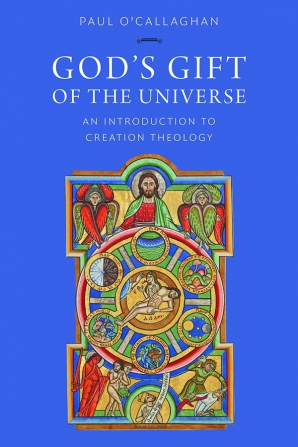Preparing your PDF for download...
There was a problem with your download, please contact the server administrator.
Children of God in the World
An Introduction to Theological Anthropology
Imprint: Catholic University of America Press
Children of God in the World is a textbook of theological anthropology structured in four parts. The first attempts to clarify the relationship between theology, philosophy and science in their respective approaches to anthropology, and establishes the fundamental principle of the text, stated in Vatican II's Gaudium et spes, n. 22, "Christ manifests man to man". The second part provides a historical overview of the doctrine of grace: in Scripture (especially the teaching of the book of Genesis on humans 'made in the image of God', as well as Paul and John), among the Fathers (in particular the oriental doctrine of 'divinization' and Augustine), during the Middle Ages (especially Thomas Aquinas) and the Reformation period (centered particularly on Luther and the Council of Trent), right up to modern times. The third part of the text, the central one, provides a systematic understanding of Christian grace in terms of the God's life present in human believers by which they become children of God, disciples, friends and brothers of Christ, temples of the Holy Spirit. This section also provides a reflection on the theological virtues (faith, hope and charity), on the relationship between grace and human freedom, on the role of the Church and Christian apostolate in the communication of grace, and on the need humans have for divine grace. After considering the relationship between the natural and the supernatural order, the fourth and last part deals with different philosophical aspects of the human condition, in the light of Christian faith: the union between body and soul, humans as free, historical, social, sexual and working beings. The last chapter concludes with a consideration of the human person, Christianity's greatest and most enduring contribution to human thought.
Paul O'Callaghan is professor of Christian anthropology at the Ponitifical University of the Holy Cross, Rome
"O'Callaghan has written much more than a textbook, since he is after nothing less than an integrated view of the whole of human existence. His book is replete with analysis of Scripture and the insights of the greatest philosophers and theologians, ancient and modern; and he is at home with the most recent literature in English, Italian, Spanish, German, and French. But readers should rejoice that what O'Callaghan here offers us is not less than a textbook. Indeed, this is a textbook in the finest tradition of the genre, profoundly instructive for teachers and students alike. At the heart of this book stands the grace by which Christ transforms human nature and history. Belongs in every classroom and on every desk where the truth about human existence is sincerely sought by the light of reason elevated by faith."
~Matthew Levering, James N. and Mary D. Perry Jr. Chair of Theology, Mundelein Seminary
"Paul O’Callaghan’s Children of God in the World moves from consideration of methodological issues and historical problematics to the substantive treatment of the weightiest questions of theological anthropology. Emphasizing the priority of the synthesis of grace while acknowledging the importance of the order of nature, he argues that while nature is not grace ‘it contains to some degree the logic of grace; the grammar of nature points toward the supernatural life.’ Some may contest his interpretation of certain figures. Still, this wide-ranging, rich, and provocative work engages central issues for Christian anthropology and the theology of grace and takes up anew some of the most difficult and controversial disputed questions in the Catholic theological tradition. A work of great breadth and scholarly cultivation, it merits and surely will receive serious attention and discussion. –"
~Steven A. Long, author of The Teleological Grammar of the Moral Act
"As welcome as it is ambitious...O'Callaghan deserves high praise for filling an important gap in theological scholarship. Not only does his work, as intended, provide the contemporary classroom with a textbook that has been needed for decades, but the breadth and depth of his erudition will additionally earn this book an important place as a reference work for scholars."
~Thomist



